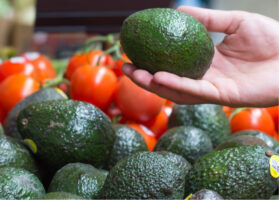Cherries in Charts: With Chile sending less fruit to the U.S., average winter prices trend upward
Looking at the information that the USDA gives us for Southern Hemispheres cherries in the U.S. markets, there are a couple of trends that I would like to write about to put this data into context and see what the upcoming season might have in store.
Let’s start with the most obvious trend. We can see from the chart below that Chile used to send a lot more volume to the U.S. than they send today. As a point of reference, during the 2017-18 season, the origin exported a third of the volume they sent in 2010-11. The reasons for this can be many, but hands down the most significant is growth from the Chinese market. China has outstripped the U.S. market considerably, offering better prices even at much larger volumes.
The other immediately apparent trend is the volatility of the pricing, which typically begins very high in November but quickly loses ground toward the end of the season in January or February, often at half the price at which it had started.
Although in the last couple of years the prices have become relatively stable, it is interesting that the decrease in volume has had a considerable impact, especially if we look at December and January, which are the months with the volume from Chile. In 2010-11, we saw the market offer US$28.67 per case in December and US$20.73 per case in January, If we look at the average monthly price of every year since, we come up with an increase of about US$10.00, with an average price of US $37.25 for December and US$31.31 in January.
As a reaction to this more attractive market, as well as the opportunities that are being offered from other destinations, we can see that producers from all over the world are more and more interested in commercializing their fruit in the US. In 2015 we saw a trickle of volume start to come in from New Zealand, complemented by the first shipments from Australia in 2016. The most prominent recent growth has come from Argentina, who only sent 400,000 Lbs in 2013-14 and growing by a multiple of six to 2.4 million Lbs in 2017-18.
With the first shipments from Chile already making their way to China, it won’t be long before we begin to see cherries show up in the U.S. After a banner year last season, in which Chile exported twice the volume as the previous year, this upcoming season the origin is expecting a 15-20% drop in volume. That said, this dramatic shift in volume never manifested itself on the U.S. markets, where last season volumes did increase, but only by 20% compared to the previous season. If this proportion holds, then I would expect that we could see prices rise. However, as exporters don’t seem to tie the volume produced to the volumes commercialized in the U.S., it looks like the U.S. has become a secondary market where exporters can manage the markets, and not just be forced to sell what nature provides. If the second scenario is the case, we might well expect to see very similar prices during the U.S. season regardless of the volume produced.
Written by: Colin Fain
Original published in FreshFruitPortal.com on October 30, 2018 (Link)










